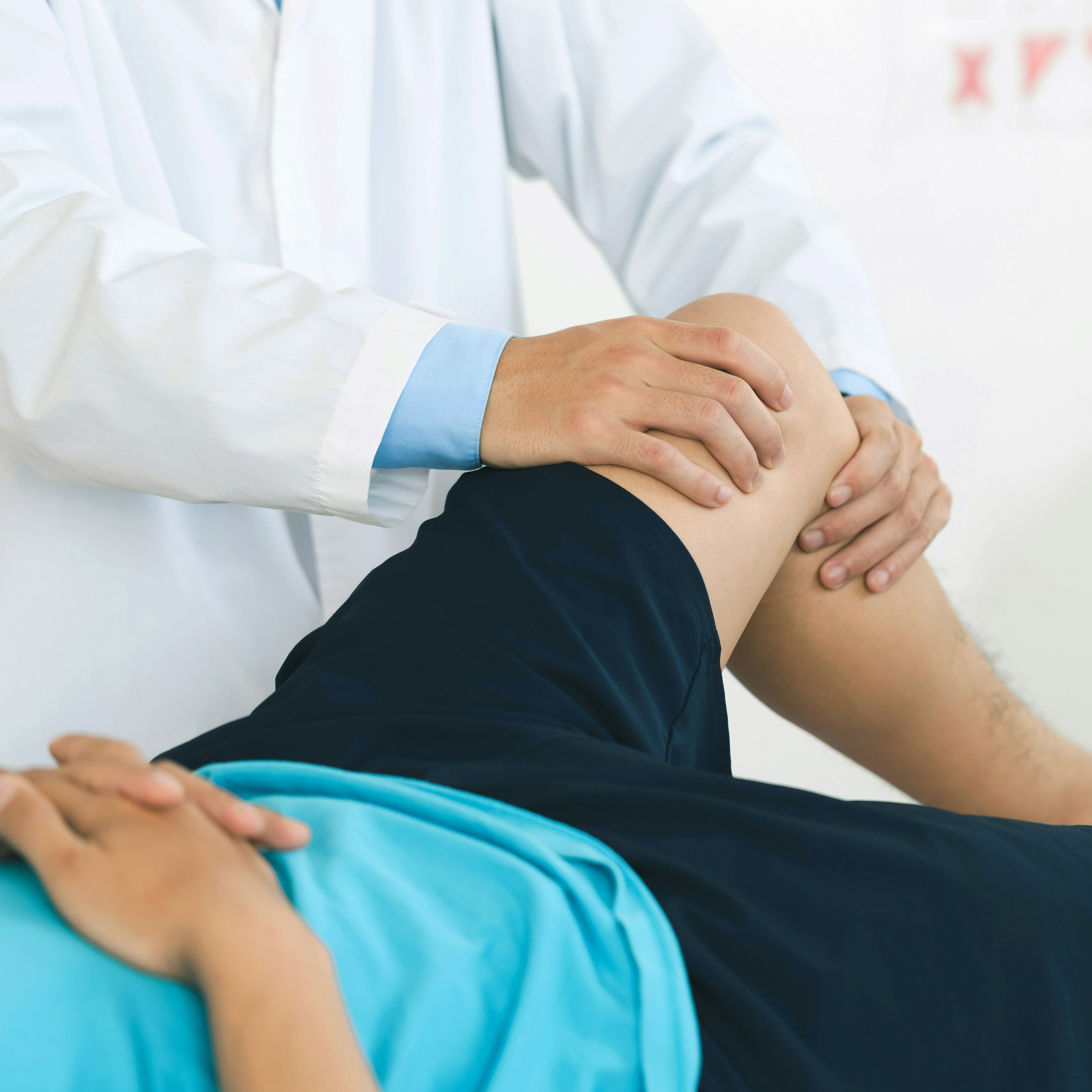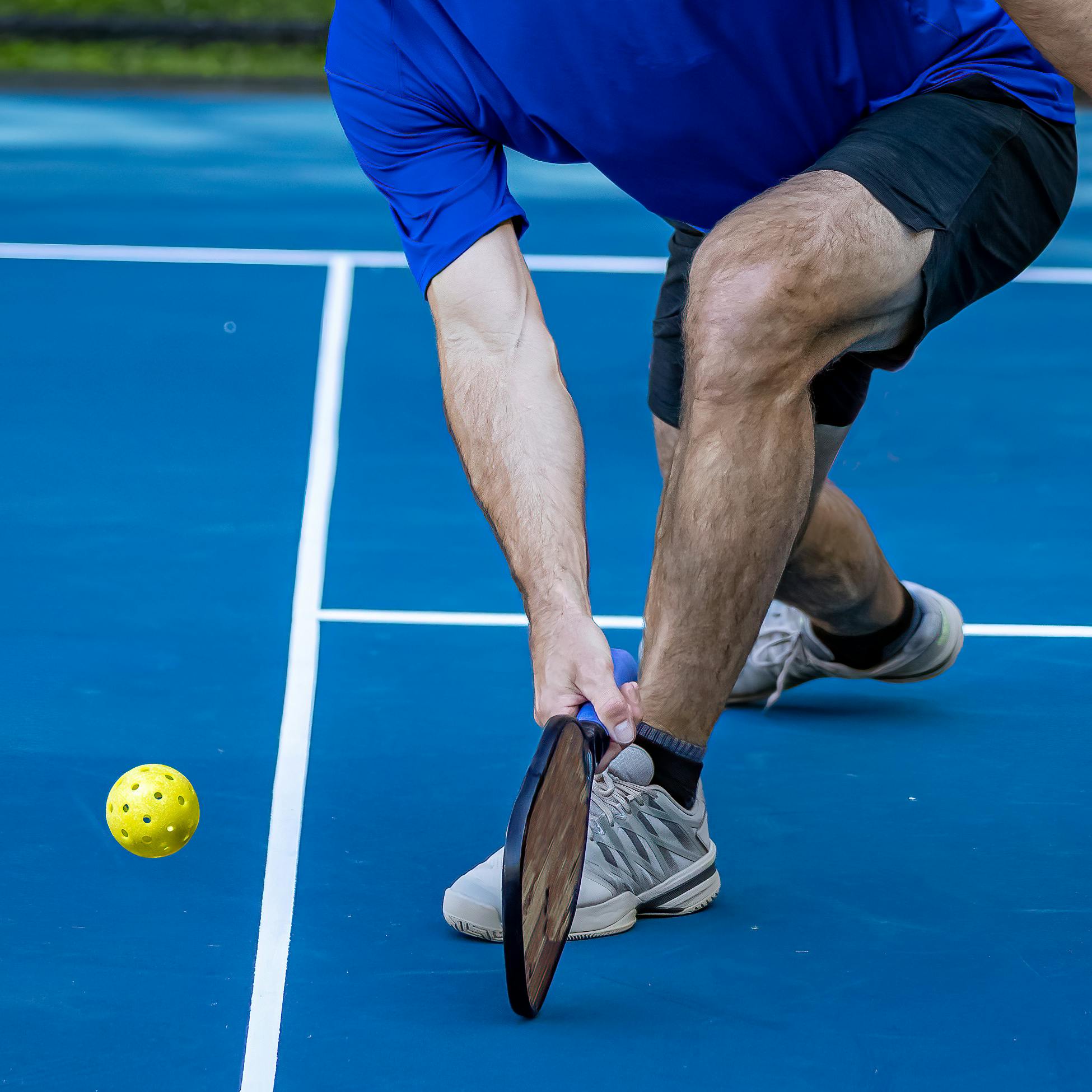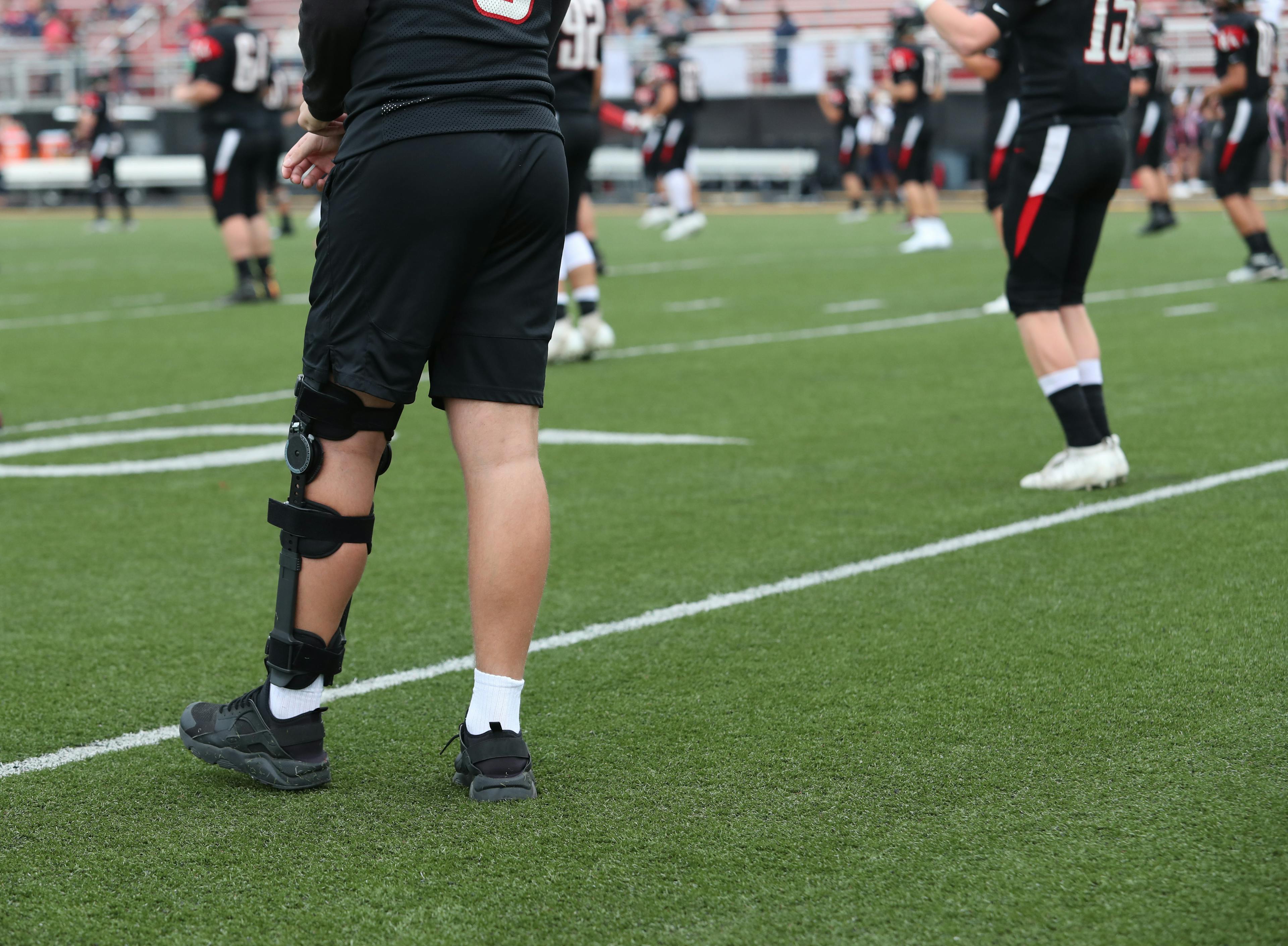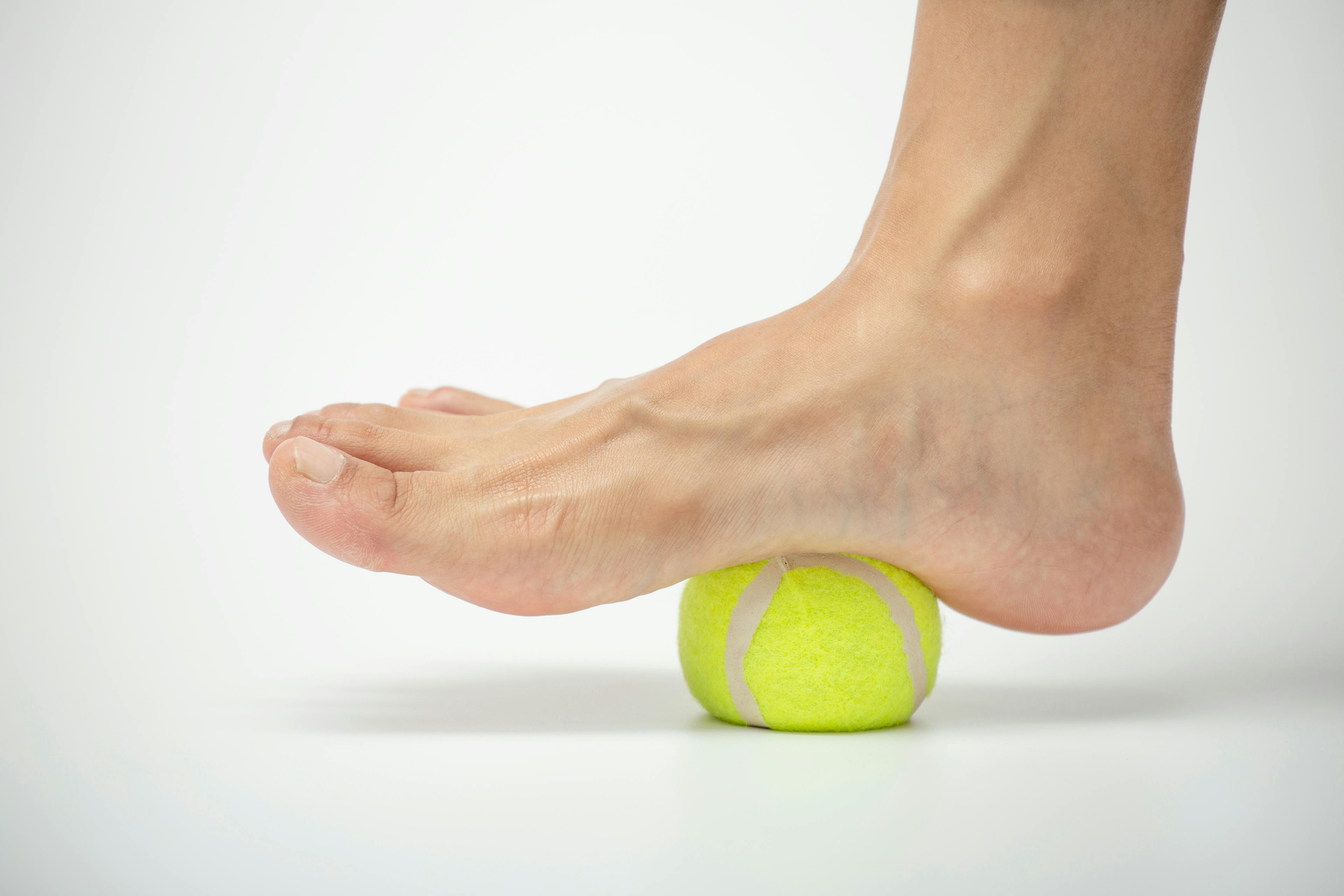Key Takeaways
Muscle vs. Ligament Injury: A muscle injury (strain) happens when fibers are overstretched or torn, while a ligament injury (sprain/tear) occurs when connective tissue between bones is overstretched or ruptured.
Symptoms & Causes: Pulled muscles usually result from overuse, improper form, or lifting, showing soreness, cramping, or mild swelling. Torn ligaments often follow twists, falls, or collisions, marked by a popping sound, immediate swelling, joint instability, and sharp pain.
Treatment & Recovery: Mild muscle strains often heal with rest, ice, and gentle stretching, while moderate to severe ligament tears may require physical therapy or surgery. Seek medical care if pain worsens, swelling is severe, or the joint feels unstable.
Muscle and ligament injuries are common, especially if you are active, work a physical job, or have had a recent fall. Whether it happens during a workout or while lifting something heavy, the pain is enough to catch you off guard. One of the first questions people often have is whether they pulled a muscle or tore a ligament.
These injuries can feel similar at first, but there are some clear differences that can guide your next steps. This post will cover the symptoms, causes, and healing process to help you decide when it is time to rest or get medical help.
What Is the Difference Between a Muscle and a Ligament?
Muscles are soft tissues that stretch and contract to move your body. Ligaments are strong, rope-like bands that connect bones and help keep joints stable.
When a muscle is injured, it is called a strain. This happens when the muscle fibers stretch too far or tear. On the other hand, when a ligament is damaged, it is called a sprain or tear. This typically involves overstretching or complete rupture of the ligament fibers.
Signs of a Pulled Muscle
Pulled muscles are usually caused by overuse, improper form, or a sudden movement. The pain may show up right away, but sometimes it becomes more noticeable a few hours later.
Common symptoms include:
- Soreness in a specific area
- Cramping or tightness
- Swelling or mild bruising
- Muscle weakness
- Pain that increases when you move or press on the area
What can cause muscle strain?
- Lifting heavy objects
- Not warming up before activity
- Overstretching
- Repetitive motion
Most mild muscle strains improve with at-home treatments like rest, ice, compression, and gentle stretching after the initial pain starts to subside.
Signs of a Torn Ligament
Ligament tears usually happen around joints like the ankle, knee, wrist, or shoulder. These injuries often result from a quick twist, fall, or direct impact during sports.
Common symptoms include:
- A popping sound or sensation at the time of injury
- Immediate swelling and bruising
- Joint instability, as if it might give out
- Sharp or deep joint pain
- Trouble moving or using the joint normally
What are the usual causes?
- Twisting injuries
- Awkward landings
- Collisions or contact during sports
Moderate or severe ligament tears may need more than just rest. Physical therapy is often recommended, and surgery might be considered if the tear is significant or the joint remains unstable.
Pulled Muscle vs. Torn Ligament: Side-by-Side Comparison
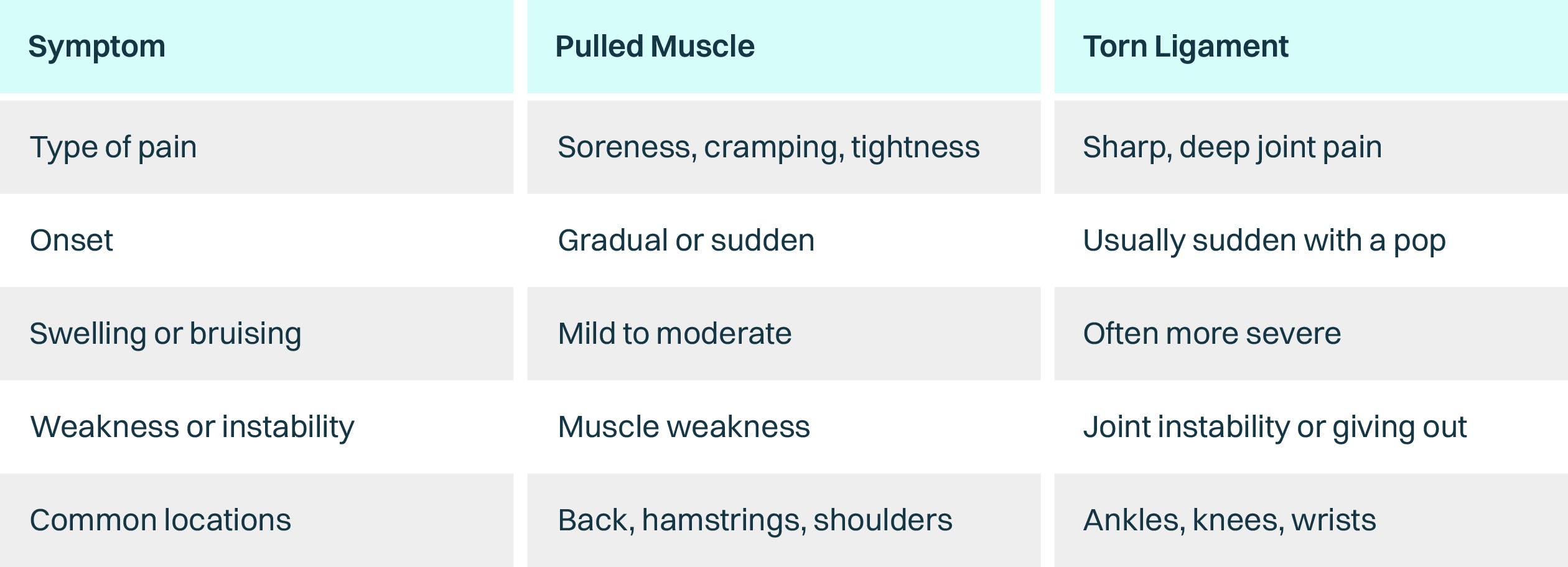
When to See a Doctor
While mild injuries may improve with self-care, some warning signs suggest it is time for a medical evaluation.
You should see a provider if:
- The pain is intense or getting worse over time
- You heard or felt a pop when the injury occurred
- Movement is limited or extremely painful
- There is a lot of swelling or bruising
- The joint feels unstable or gives out when you try to use it
In some cases, symptoms may point to a more serious issue, such as a fracture alongside the soft tissue injury. A doctor may recommend imaging like an X-ray or MRI to confirm the diagnosis and guide your treatment plan.
What Recovery Might Look Like
Recovery depends on the type and severity of the injury. Mild strains may improve within a week or two, while ligament tears often take longer. Treatment may include physical therapy, bracing, or surgery if the damage is extensive.
Ultimately, listening to your body, following medical advice, and allowing time to heal are all part of getting back to full strength.
